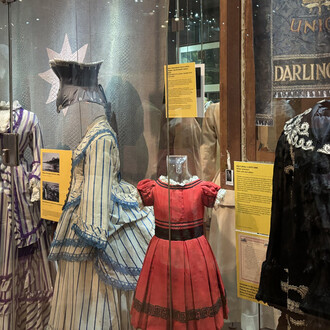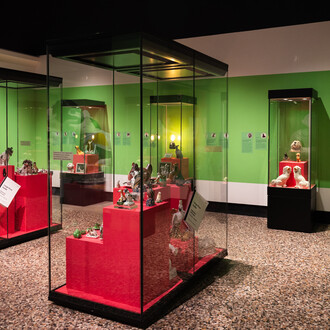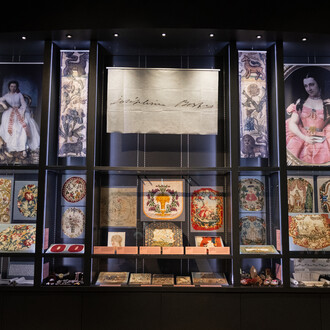For a man with so many talents, Jeremiah Dixon (1733-1779) of Cockfield, near Barnard Castle, is shockingly misremembered. He was a scientist, mathematician, surveyor, cartographer, astronomer and, perhaps above all, an artist, but people even get his birth date wrong. He made momentous discoveries in pursuit of scientific learning, yet the Royal Society’s own website muddles him with up with another, much less notable contemporary, Jeremiah Dixon (1725-1782) of Gledhow near Leeds.
Although very much a ‘local boy’ in his background, education and experience, Jeremiah was chosen by the greatest scientists of the day to travel the world with Charles Mason to observe the transit of Venus (across the face of the Sun) in June 1761. They were to sail to Sumatra, a sea-voyage of six months fraught with danger not only from storms but also from the French, with whom we were (as usual) at war.
Indeed, HMS Seahorse, the ship they were on, was almost immediately involved in a ferocious battle with a larger French frigate, and they suffered such severe numbers of casualties and such damage to the structure of the ship that they had to put back to Plymouth for repairs. It must have been a terrifying experience for two young men with no previous experience of naval engagements to find themselves involved in a full-blown battle.
So much time had by now been lost that they could no longer reach Sumatra, so instead they went to Cape Town, where they immediately sought permission to build a temporary observatory. The very telescope they took with them will be on display in the exhibition. With it, they made observations of the transit that were as good as any made by any team that year, in any location across the globe.
In 1763 Jeremiah Dixon and Charles Mason were approached by Thomas Penn, the largest private landowner in the world, and Lord Baltimore (whose family seat, incidentally, was Kiplin Hall near Northallerton) to survey an accurate boundary between their respective territories of Pennsylvania and Maryland. American surveyors had proved incapable of completing the task, so men with greater skills were needed.
This demanding project took a total of five years (together with measuring a degree of longitude and drawing and printing the map), much of which was spent hacking through virgin forest supported by, among others, a team of Native American Indians. A couple of contemporary Iroquois Indian artefacts will be displayed in the exhibition, a tomahawk and a wooden dance club. The task was once again fraught with danger, and in fact they had to abandon it a few miles short of completing the route because the Indians would not cross the warpath of a neighbouring tribe. The last few miles had to be completed by other surveyors many years later.
One particular treasure that it has been a great thrill to identify is the Journal of Charles Mason, which is in the Library of the University of Pennsylvania in Philadelphia. It had been residing in their archives for many decades, perhaps ever since Mason’s death in Philadelphia in 1786, but it had been catalogued as by ‘an unknown seaman.’ As soon as I saw the sequence of ship voyages involved, however – on HMS Seahorse, HEICS Mercury and HEICS Prince Edward – I knew that the log could only have been kept by Charles Mason and notified the Library accordingly. They are so delighted with the new attribution that they have promised to send the Journal for display in the exhibition, and may even be sending a member of the Library staff to accompany it.
In 1769 the Royal Society again asked Jeremiah Dixon to observe a transit of Venus, and this time sent him to Hammerfest in the extreme north of Norway, inside the Arctic Circle. On this occasion he was the lead observer on the team, and made another very successful set of observations. We are in the process of arranging for a talk to be given by Dr Nils Johansen, a Norwegian academic at Oslo University who is coming to Barnard Castle for the exhibition and is an expert on the details of this transit event.
The rest of Jeremiah’s life seems to have been an absolute contrast, living quietly in Cockfield, working as a surveyor for the Raby estates, for whom he drew the most beautiful maps, ornamented with exquisitely decorative cartouches. He also surveyed Auckland Castle Park and Lanchester Moor, and supported his brother George in surveying a proposal to build a canal to carry the coal from Cockfield Fell to the River Tees at Gainford, a project that was never built.
So, here was a Cockfield man who had travelled the world, seen Native Americans in the forests of the South, seen (and deplored) slavery in both America and South Africa, met some of the richest and most influential people in the world, and given his name to the best-known boundary line on the surface of the earth. The term ‘Dixie-land’ is universally recognised as meaning the southern States of America, those south of the Mason-Dixon Line, and the term ‘Dixie’ resonates in literature, music, politics and geography. Not a bad record for a boy from a small pit village in County Durham!
Text by Jonathan Peacock, Exhibition Researcher












